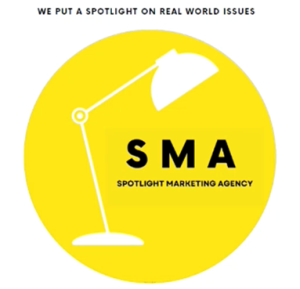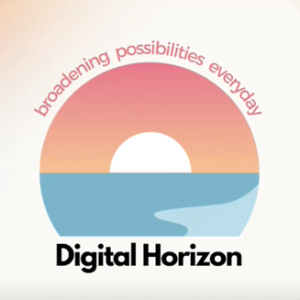This Education for Sustainability case study is from Melanie Maddison. After a 20 year career in the NHS with particular interest in cardiology nursing leadership and sustainable healthcare, Melanie joined King’s as Lecturer in Adult Nursing in the School of Nursing, Midwifery and Palliative Care. She was instrumental in making the School the first in the country to be awarded Beacon Status by the Centre for Sustainable Healthcare. Here Melanie discusses sustainability teaching across undergraduate Nursing modules including clinical skills, quality improvement and working with and motivating others.
“We teach students about movements like Black Lives Matter and Me Too, so they start to realise that they don’t need to take everything on their own shoulders, and if enough people agree that something could change then they don’t need to wait for somebody with leadership in their job role.”
| Sustainable development goals addressed | Sustainability competencies addressed |
|---|---|
| 3. Good health and well-being – two purposes of nursing education.
10. Reduced inequalities through attention to how the ‘triple bottom line’ influences health. 13. Climate action through reduction in waste. |
Systems thinking. Holistically conceptualising patient care in terms of the ‘triple bottom line’.
Normative thinking. Analysing clinical skills teaching and practices to reduce different kinds of waste. Strategic thinking. Incorporating sustainability into quality improvement. Self-awareness. Students becoming aware of their agency even if they don’t have leadership in their job titles. Integrated problem-solving. Working with problem scenarios from the Centre for Sustainable Health Care. |
What is the purpose of the module and why is sustainability important to it?
We want nursing students to come out of university being able to make their patients’ lives better, the planet better – all these things. The NHS is busy and overloaded and part of that is because our processes sometimes don’t talk to each other and because we’ve always done it in a certain way. You can put a sustainability spin on that, because whatever you’re wasting – PPE, anaesthetic gas, a patient’s time, turning up to six different appointments, fuel, money, your own time fetching something stored in an inconvenient place. Less waste is better.
The environment has a huge role to play in human health, but the Nursing & Midwifery Council Code and Nursing Standards were written in 2018 and don’t have much to say about this yet. That is in contrast to the General Medical Council Outcomes for Graduates which states that newly qualified doctors need to bring the principles of sustainable healthcare into their practice and make a link between planetary health and human health.
That said, our undergraduate nursing students learn about sustainability in their leadership, and their quality improvement modules. The leadership module is called ‘Working With and Motivating Others’ and supports third year nursing students to become agents of change in certain situations and develop the self-confidence to know that they have some power and some purchase when they qualify. We say to students that yes, it is really, really busy in the NHS, but if you don’t try to change stuff – particularly when you first start work – then you’ll get sucked into the daily treadmill and never believe you can innovate. We teach students about movements like Black Lives Matter and Me Too, so they start to realise that they don’t need to take everything on their own shoulders, and if enough people agree that something could change then they don’t need to wait for somebody with leadership in their job role. Teaching them about eco-activism fits well with this and avoids eco-anxiety which can lead to inertia and acceptance.
How do you bring together sustainability and disciplinary learning?
Since 2021 eleven members of our faculty have worked with the Centre for Sustainable Healthcare (CSH) to incorporate the principles of sustainability into our curriculum. This includes the ‘triple bottom line’ which looks at the financial savings, reduction in environmental damage and improving the social determinants of health. This is a nice way of thinking holistically about patient outcomes. The CSH have open-licensed resources and case studies for adult nursing so I can show students, say, how an A&E decided they were using too many cannulas, took a look at why that was and managed to reduce the number of cannulas. This is better for the patient, less cost and less plastic waste. Boom! That’s how you frame it, and students respond well to that type of case study.
Our job as educators is to bring in pedagogical design to how we use these CSH materials. For example students can do my Cardiology course and learn how to use more environmental sustainable products in a clinical setting. I start the session with Sustainability Bingo that acts as an ice-breaker and allows students to explore their personal values about the climate crisis and apply it to their professional persona.
We’ve also been working on a project to audit the contents of the bins in the clinical skills lab to see what people throw away during the session. The aim is to reduce the waste produced in these sessions. ‘Bin Diving’ was not something I thought I would be doing as an educator but this just shows how glamorous my life is as a lecturer at times, but seriously it has been very revealing. We found that we’re incinerating used aprons and gloves that haven’t been contaminated by clinical exposure to bodily fluids, or certain items such as syringes that could have been reused for those six different practice attempts with the same plastic mannequin. That’s a huge carbon footprint and has a financial implication which we could solve in a heartbeat, and in a way which keeps the clinical verisimilitude and doesn’t interfere with the habits and muscle memory of, say, always putting on gloves before going to a real patient. If students are practising with one mannequin throughout the session then they can use the same pair of gloves for all their attempts without harm to anyone. If we’re using mock substances and the gear isn’t contaminated, then it can be part of a re-use or recycle scheme rather than being thrown away. This does need to be considered in line with the student’s level of competency and we do not want to encourage poor practice but overall, we can make changes to excessive use in the sessions as well as how it is ultimately disposed of.
How do you assess sustainability learning?
The nursing curriculum is often competency-based and driven by prescribed learning outcomes so teaching and assessing values and a sense of agency is challenging. There is no mandate from the Nursing and Midwifery Council yet. Currently nursing students have only three years and a tight schedule with many competing demands before they qualify. Assessing sustainability learning in clinical placements is also tricky because nursing students are only there for approximately six weeks and it’s often outside their scope to make quality improvement interventions.
But what’s been clear is that most of our nursing students have an appetite for this, so we’re asking the Nursing and Midwifery Council to consider including competencies and an Episode of Care reflection related to environmental sustainability. When we have that mandate to make a link between planetary health and human health, we’ll be able to include that in our learning outcomes and assess it fully.
Thinking longer term, for the ‘Working With and Motivating Others’ module, what I want to know is how much students already know and how much they are taking to heart. The students do an academic reflection where they make a toolbox for themselves about maintaining their own resilience and well-being in their careers – you know, “I have a bladder and it’s been 12 hours on shift, so I have to go to the toilet now” – and about gaining the strength to become an agent of change. So, if they see a different way to do something that helps the patient, the environment and themselves, by saying it out loud, suddenly they are a quality improver.
What support do students need?
“Post-pandemic, many students may have been left with mental health and anxiety issues, and they’re also in a profession that brings heavy mental trauma, insult and injury, all of which can lead to occupational burnout. So, what you don’t want them to do is get so anxious about the state of the planet that they can’t do anything at all.”
The triple bottom line is quite simple to teach because you just give students some problems to solve, and they work it out using the equation. But teaching values is less simple. Post-pandemic many students may have mental health and anxiety issues, and they’re also in a profession that brings heavy mental trauma, insult and injury, all of which leads to burnout. So what you don’t want them to do is get so anxious about the state of the planet that they can’t do anything at all. In environmental movements they talk about turning your eco-anxiety into eco-activity. This course is about empowerment and agency, so without being doom-laden we try to engage with them on a personal level – because on a personal level so many of them are already invested in it.
What benefits have you seen?
This year we will be evaluating students’ responses to the sustainability sessions and encouraging them to get involved with such initiatives as the Planetary Health Report Card, a student-led evaluation of the eco sustainability of their campus and learning environment. For ‘Working With and Motivating Others’ specifically, it would be lovely to meet with them at the end and find out whether they think it will be helpful. As part of our curriculum co-design, I am trying to get them back after they’ve qualified and talk about the parts of the course which made them a motivator or an agent of change – or which didn’t, since this course is dynamic and has to evolve yearly. I have recorded a short podcast with an outgoing student and shown it to the new cohort so that they can see how that student has responded to the issues raised in the course.
Do you have any suggestions?
There’s very little literature about teaching sustainability values specific to nursing. It mostly focuses on, say, the carbon footprint of a clinical skills session, or digital learning, but far less about developing values. So if anyone is teaching this kind of thing, they should publish about it! A lot of tutors don’t feel comfortable talking about sustainability because they don’t feel they know enough. And I find that quite funny because sustainability is not an elitist thing – anyone can do it. But maybe people need to make that connection between sustainability and global health for example through the UN Sustainable Development Goals and the World Health Organisation.
Another thing is one-to-ones I’ve had with overwhelmed educators worrying about having no space in their curriculum. We’ve been able to talk about bringing the Triple Bottom Line into problem-based learning scenarios without adding anything extra. We view the content through the lens of sustainability rather than adding more. It’s a case of reframing the curriculum and I don’t think there is any conflict or competition there. And if there’s too much going on, I think about it in terms of inequality – because it’s the most disadvantaged people who have the worst living conditions and tend to face the most discrimination. Climate change and the impact on health hits hardest amongst disadvantaged communities. It should be a priority.
It’s been great getting involved in the sustainability events at King’s led by Frans Berkhout. Through meeting sustainability colleagues in Estates I found out about lab recycling and reuse schemes in medical education which we can bring into our labs. I would never have had any kind of interface with that role otherwise, so that’s proper collaborative working.






